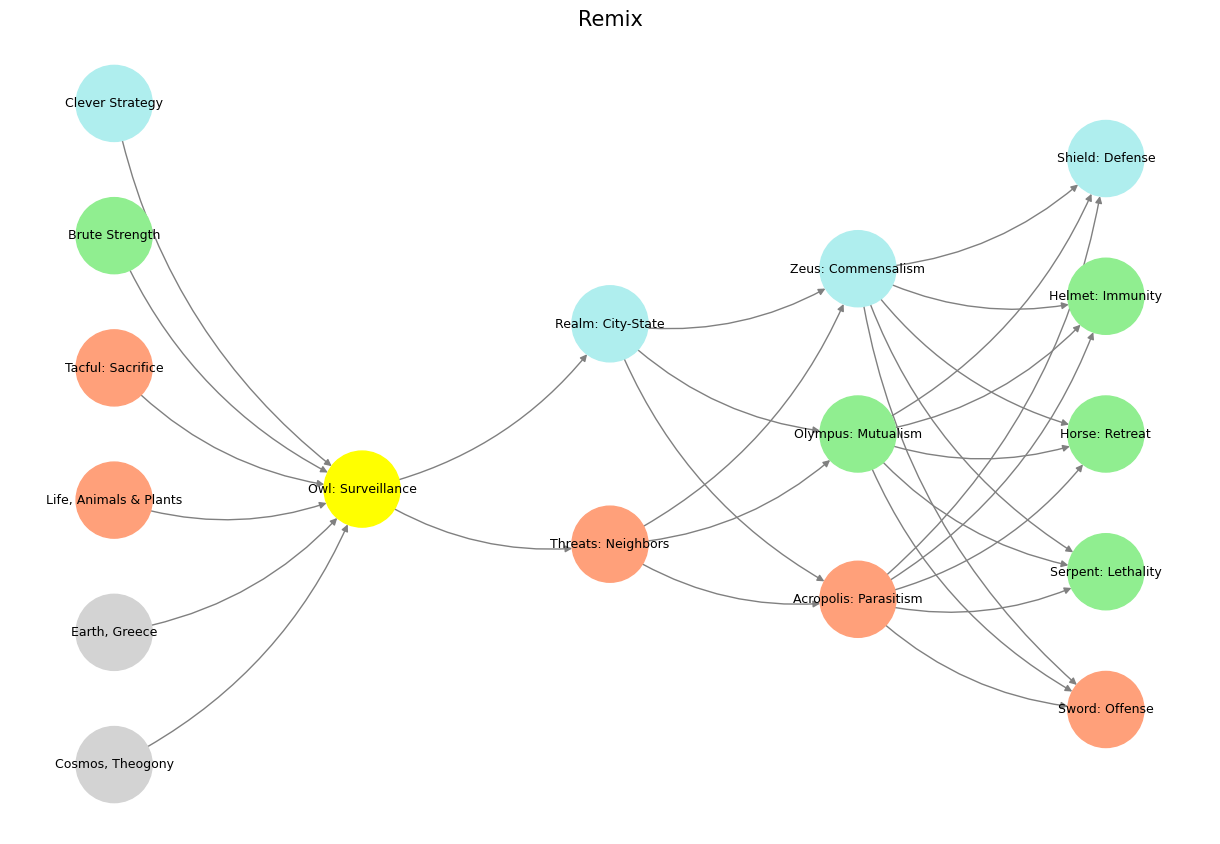Risk#
Flight, Ascension, and the Transcendence of Boundaries
The image of Jesus ascending to heaven, rising through or above a cloud, is one of the most transcendent and enduring symbols of the human imagination. It represents the ultimate form of flight, not merely physical but spiritual—a liberation from the constraints of mortality, space, and time. In a similar, albeit more mechanistic vein, Elon Musk’s SpaceX captures something of this aspirational spirit, launching humanity beyond Earth’s atmosphere with the audacious goal of colonizing Mars. Both the biblical ascension and the technological triumph of SpaceX evoke a deeper longing: to transcend the boundaries that define and confine human existence.
Ascension as the Archetype of Flight#
The ascension of Jesus can be interpreted as the archetypal dream of flight. Unlike the myth of Icarus, where the act of flying is punished for hubris, the ascension is framed as an act of divine triumph. Jesus, having overcome death, rises not by human effort or ingenuity but by grace, symbolizing a transition from the earthly to the eternal. The cloud plays a dual role here, both obscuring and emphasizing the mystery of the event. It veils the mechanics of the ascension while highlighting the symbolic significance: flight as the ultimate act of transcendence.
This image resonates deeply because it speaks to a universal human desire to rise above. In the context of your neural network framework, the ascension could be seen as a perfect realization of agency—an output unbounded by the input layer’s rules. Gravity, mortality, and even the physical body are transcended, leaving only the spiritual essence, rising effortlessly toward a higher order.
SpaceX: The Realization of the Dream#
Elon Musk’s SpaceX occupies a liminal space between dream and reality. On the surface, it is a capitalist venture, rooted in markets, competition, and profit. Yet it carries a symbolic weight far beyond its financial or technological achievements. SpaceX represents humanity’s collective aspiration to break free from the confines of Earth and to establish a presence among the stars. In this sense, it is not just a company but a realization of the ancient dream of flight and ascension.
The rockets, rising through the atmosphere on pillars of fire, echo the imagery of ascension—though here the mechanism is not divine grace but human ingenuity. The ambition to reach Mars transcends the purely pragmatic goals of most corporations, tapping into a cosmic vision of human potential. It is a modern-day echo of the Tower of Babel, but one that seeks not to challenge the divine but to fulfill humanity’s destiny as explorers and creators.
Dreams and Realizations: Bridging the Gap#
The contrast between Jesus’ ascension and SpaceX’s Mars ambitions highlights the tension between dream and realization, imagination and action. The ascension is purely symbolic, a narrative that exists outside the bounds of physical possibility. SpaceX, on the other hand, operates within the constraints of the physical world, pushing against them with the force of engineering, physics, and capital. Yet both acts—one imagined, the other realized—spring from the same source: the desire to transcend.
In your neural network framework, these two forms of flight could be seen as different outputs from the same hidden layer of potential. The ascension represents an archetypal pathway, an idealized vision of what it means to rise above. SpaceX, by contrast, represents an iterative realization of that vision, where each launch refines the pathway and brings the dream closer to reality. Both are acts of reweighting—shifting the balance of possibilities toward a higher-order goal.
The Cloud as Boundary and Portal#
The cloud, present in the ascension and in every rocket launch, is a powerful symbol. It marks the boundary between the known and the unknown, the earthly and the celestial. For Jesus, the cloud signifies the transition to a divine realm, inaccessible to human understanding. For SpaceX, the cloud is both a literal barrier—Earth’s atmosphere—and a metaphorical one, representing the limits of current technology and imagination.
Breaking through the cloud, in both cases, is an act of transformation. It is a moment where the rules of the pre-input layer are rewritten, allowing for a new output that redefines what is possible. The cloud, then, becomes a portal, a threshold that must be crossed to achieve transcendence.
Flight as Humanity’s Defining Ambition#
The dream of flight, whether in religious imagery or technological innovation, is a defining feature of humanity’s story. It reflects a fundamental dissatisfaction with stasis, a refusal to accept the limits imposed by nature. From the myth of Daedalus to the ascension of Jesus to the rockets of SpaceX, flight symbolizes the human spirit’s relentless drive to rise, to explore, and to create.

Fig. 23 Stripes & Stars: Expanding our territory into new horizons, planting our ambitions among the stars and even on Mars, speaks to the lifeblood of a nation driven by boundless aspiration. Curiously, these words were uttered at 12:25 PM on January 20, 2025, echoing notes I had made nearly 10 hours earlier. The speech’s cadence evokes the Anglican hymn All Things Bright and Beautiful, though it skirts the stark reality of the displaced natives, whose histories remain reduced to a tidy narrative, smoothed over in service of progress. Yet, the spirit of the frontier, both its glory and its shadow, seems etched into the very fabric of our souls.#
This ambition is not without risk. The Tower of Babel serves as a cautionary tale, warning of the dangers of hubris and overreach. Yet it is also a reminder that the act of striving—of pushing against boundaries—is itself a form of transcendence. SpaceX, with its ambitions for Mars, walks this fine line, balancing the practical demands of engineering and finance with the visionary goals of exploration and survival.
Conclusion: Toward the Infinite#
Both the ascension and SpaceX remind us that flight, in its highest form, is not merely about physical movement but about transformation. It is the act of rewriting the rules, of turning the impossible into the inevitable. Whether through divine grace or human ingenuity, flight represents the ultimate output of the hidden layer’s potential—a realization of agency that transcends the constraints of the input layer.
In this sense, Jesus’ ascension and SpaceX’s rockets are not so different. Both are acts of liberation, journeys that begin in the earthly realm and aim for the infinite. They speak to the same longing, the same dream: to rise above, to reach beyond, and to discover what lies on the other side of the cloud.
Show code cell source
import numpy as np
import matplotlib.pyplot as plt
import networkx as nx
# Define the neural network structure
def define_layers():
return {
'World': [
'Cosmos, Theogony', 'Earth, Greece', 'Life, Animals & Plants',
'Tacful: Sacrifice', 'Brute Strength', 'Clever Strategy'
],
'Perception': ['Owl: Surveillance'],
'Agency': ['Threats: Neighbors', 'Realm: City-State'],
'Generativity': [
'Acropolis: Parasitism', 'Olympus: Mutualism', 'Zeus: Commensalism'
],
'Physicality': [
'Sword: Offense', 'Serpent: Lethality', 'Horse: Retreat',
'Helmet: Immunity', 'Shield: Defense'
]
}
# Assign colors to nodes
def assign_colors():
color_map = {
'yellow': ['Owl: Surveillance'],
'paleturquoise': [
'Clever Strategy', 'Realm: City-State', 'Zeus: Commensalism',
'Shield: Defense'
],
'lightgreen': [
'Brute Strength', 'Olympus: Mutualism', 'Helmet: Immunity',
'Horse: Retreat', 'Serpent: Lethality'
],
'lightsalmon': [
'CosmosX, Theogony', 'EarthX, Greece', 'Life, Animals & Plants',
'Tacful: Sacrifice', 'Acropolis: Parasitism', 'Sword: Offense',
'Threats: Neighbors'
],
}
return {node: color for color, nodes in color_map.items() for node in nodes}
# Calculate positions for nodes
def calculate_positions(layer, x_offset):
y_positions = np.linspace(-len(layer) / 2, len(layer) / 2, len(layer))
return [(x_offset, y) for y in y_positions]
# Create and visualize the neural network graph
def visualize_nn():
layers = define_layers()
colors = assign_colors()
G = nx.DiGraph()
pos = {}
node_colors = []
# Add nodes and assign positions
for i, (layer_name, nodes) in enumerate(layers.items()):
positions = calculate_positions(nodes, x_offset=i * 2)
for node, position in zip(nodes, positions):
G.add_node(node, layer=layer_name)
pos[node] = position
node_colors.append(colors.get(node, 'lightgray')) # Default color fallback
# Add edges (automated for consecutive layers)
layer_names = list(layers.keys())
for i in range(len(layer_names) - 1):
source_layer, target_layer = layer_names[i], layer_names[i + 1]
for source in layers[source_layer]:
for target in layers[target_layer]:
G.add_edge(source, target)
# Draw the graph
plt.figure(figsize=(12, 8))
nx.draw(
G, pos, with_labels=True, node_color=node_colors, edge_color='gray',
node_size=3000, font_size=9, connectionstyle="arc3,rad=0.2"
)
plt.title("Remix", fontsize=15)
plt.show()
# Run the visualization
visualize_nn()


Fig. 24 G1-G3: Ganglia & N1-N5 Nuclei. These are cranial nerve, dorsal-root (G1 & G2); basal ganglia, thalamus, hypothalamus (N1, N2, N3); and brain stem and cerebelum (N4 & N5).#

